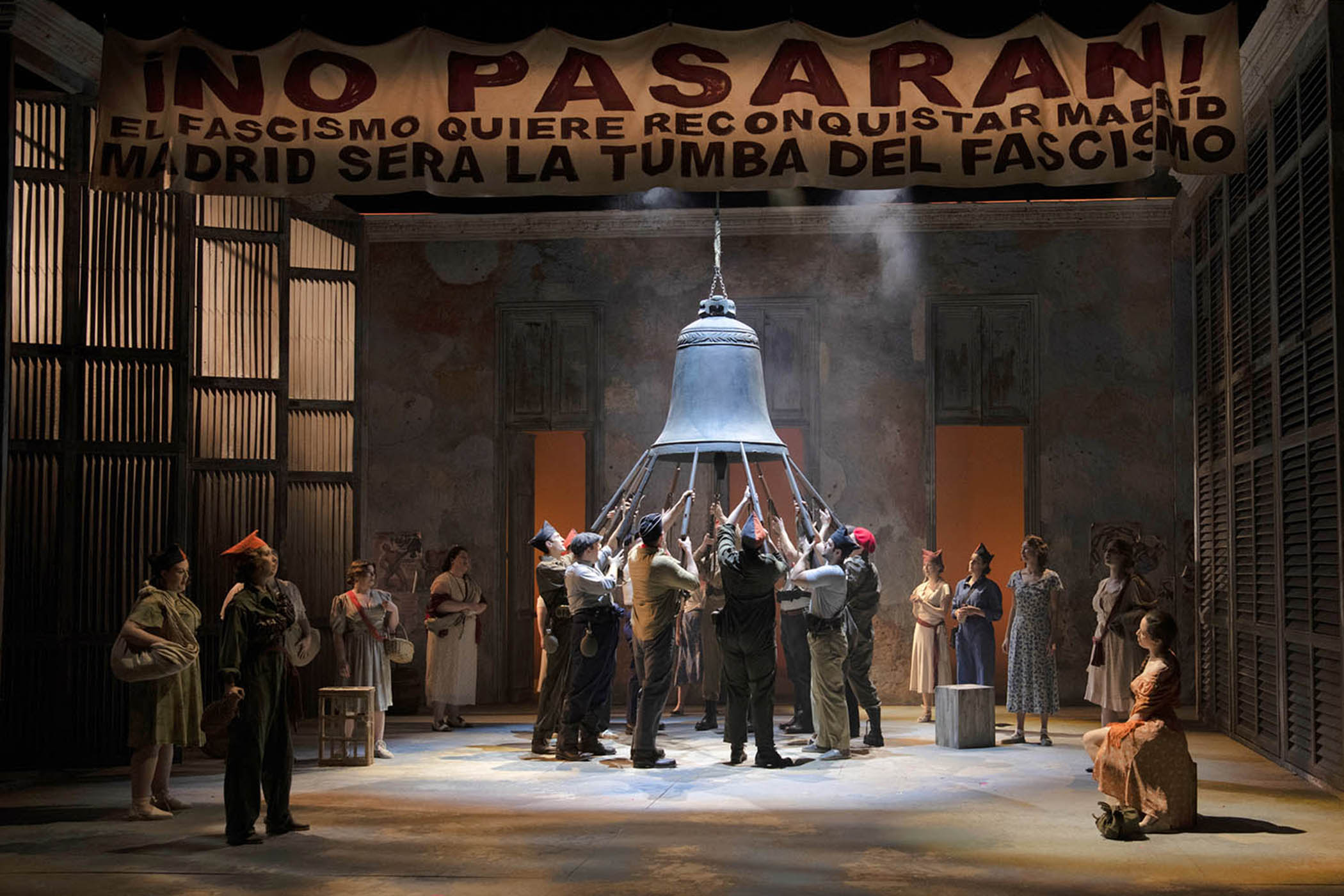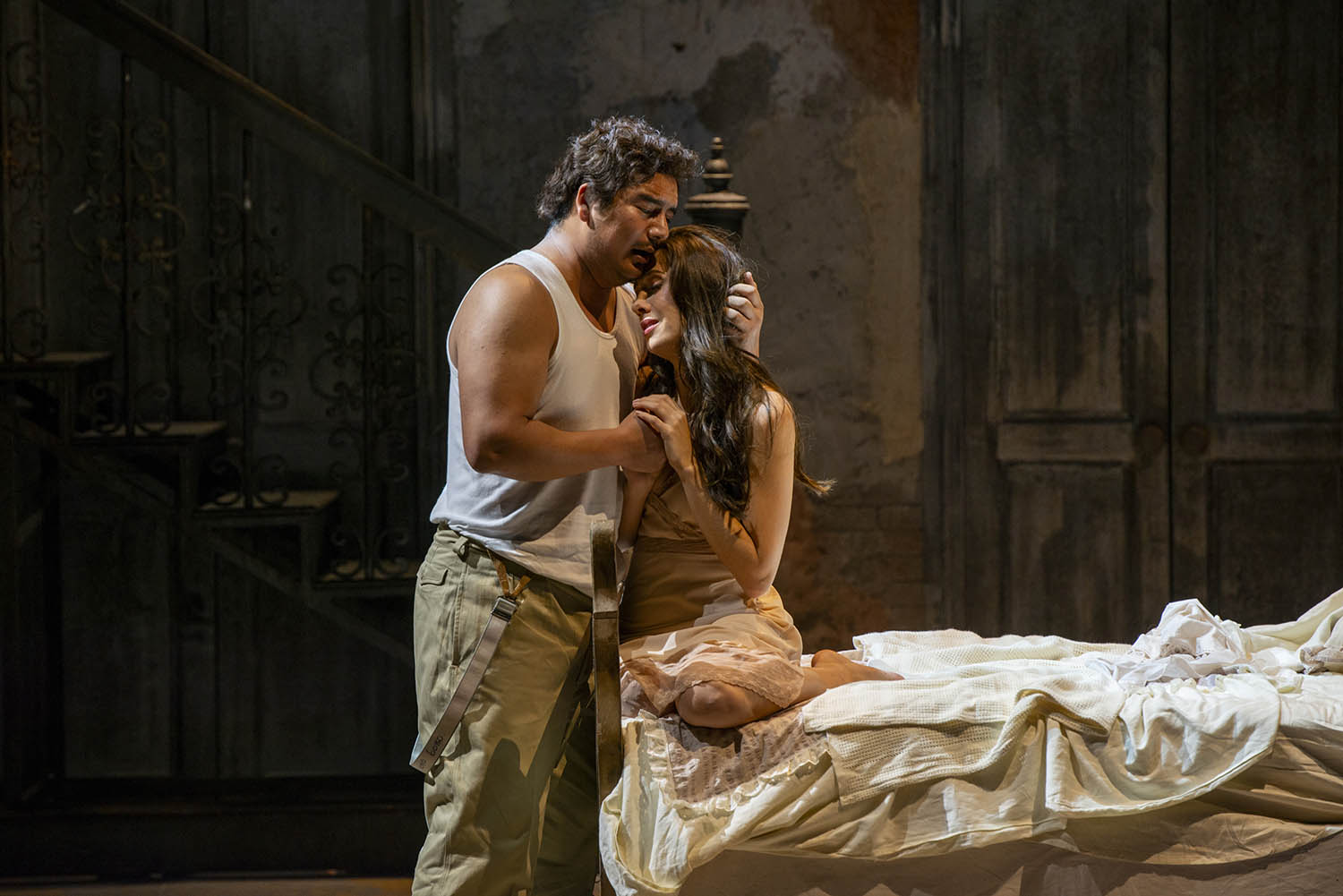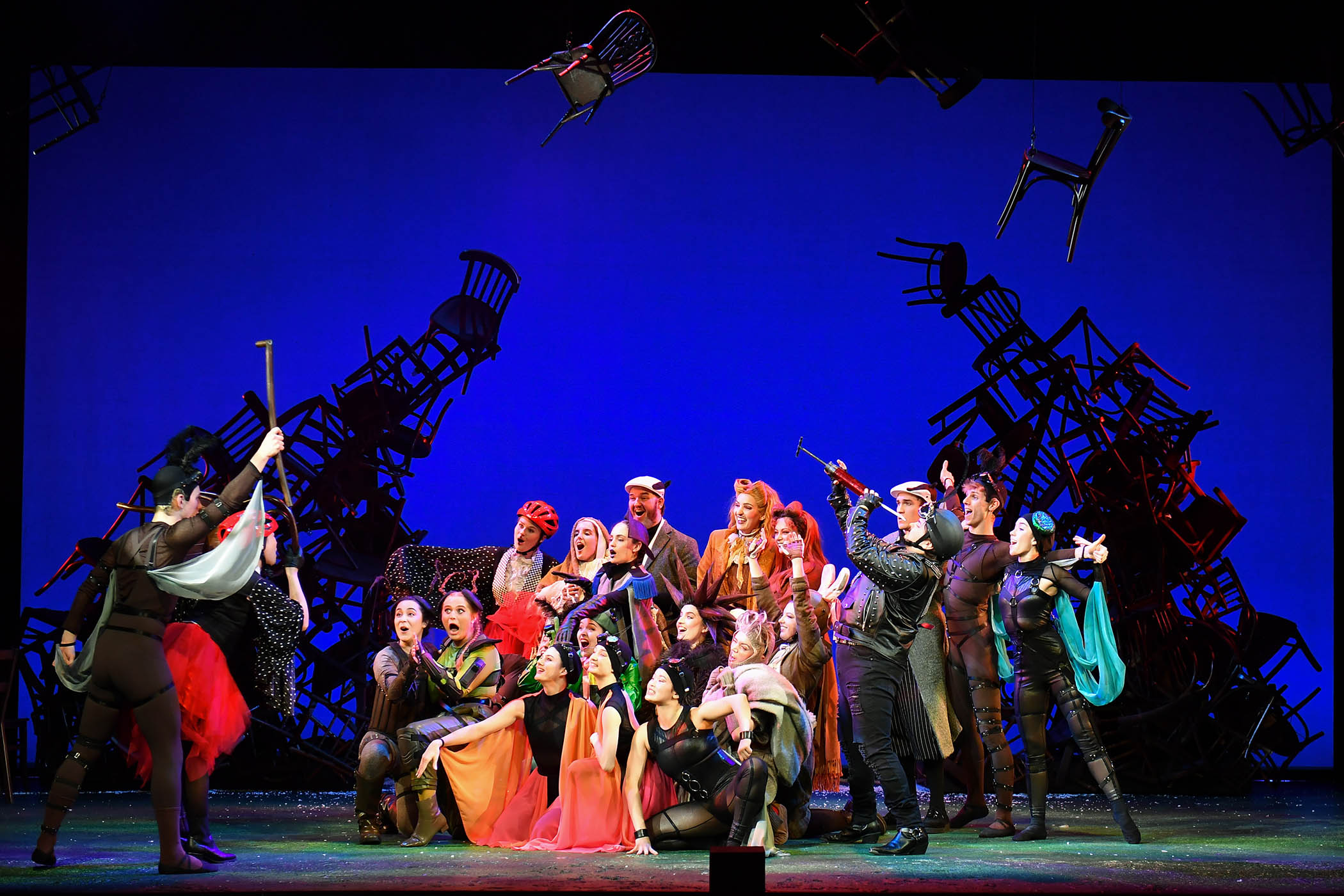Litter pickers were out early last weekend, the morning after the night before. Opera first nights do not usually require civic clear-ups. Nor, alas, do they habitually provide a spectacular fireworks display attracting 20,000 spectators and many waving glowsticks (get a wiggle on, Covent Garden). Wexford Festival Opera, in all respects, is an exception. The waterfront party launched the 74th season of an annual event founded in 1951 by Dr Tom Walsh, an anaesthetist and amateur singer. His ambitions were visionary. A small harbour town in south-east Ireland in late autumn is not obvious festival terrain.
If no more than a small percentage of the crowd were due at Verdi’s Le Trouvère – the little-known French version of Il Trovatore – that same night, the whole community knew the event was taking place. On the quay, a children’s chorus bellowed, impressively and with many percussive noises off, the Anvil Chorus from that opera. In the narrow medieval streets, bunting was out. Pop-up and fringe events added round-the-clock energy: Colm Tóibín, born in nearby Enniscorthy, provided the libretto for a tiny opera, Urban Legends, a romance set in the town’s main street. Each year, hotels and restaurants are full for the festival fortnight. Some rehearsals are free for local people. Many join in as volunteers.

The cast and chorus of Le Trouvère. Main image: Lydia Grindatto as Azucena and Eduardo Niave as Manrique, who leads the republicans
The focus is operatic rarities, performed to high professional standards. This bold pursuit has no exact equivalent the world over, earning Wexford an international profile. The 2025 theme was myths and legends, a cover-all term that could embrace most of the operatic repertoire, from Monteverdi’s L’Orfeo (1607) onwards. It suited this year’s choices (all livestreamed on RTÉ Culture): Handel’s Deidamia, set against a backdrop of the Trojan war; Delius’s The Magic Fountain, about a quest for eternal youth; and, opening proceedings, Le Trouvère, adapted by Verdi for the Paris Opera in 1857. The story revolves around Azucena, who mistakenly throws her own baby on the fire instead of her enemy’s child, an action not easily comprehended except in the realm of myth.
Directed by Ben Barnes, a former artistic director of the Abbey theatre in Dublin, and conducted by Marcus Bosch, Le Trouvère was updated from the 15th century to the 20th. Barnes said in an interview that the move to the Spanish civil war period would help the piece “scan more easily” for a modern audience. True, khaki drill looks far better than doublets and hose, but the plot remained clogged. Little wonder that the Royal Opera’s recent staging (in the original Italian) introduced writhing demons and fallen angels straight out of Hieronymus Bosch. Verdi’s choruses, ensembles and arias, impassioned and spellbinding, carry us through the tangle of love, war and revenge.
The choruses, ensembles and arias, impassioned and spellbinding, carry us through the tangle of love, war and revenge
Le Comte de Luna, enacted with rich-toned authority by the Georgian baritone Giorgi Lomiseli, has become a nationalist leader. His opponent Manrique, lyrically sung with exciting top notes by Eduardo Niave, leads the left-leaning republicans. The figure of the vengeful Azucena, hard to explain and described as a gypsy, always chills. The Ukrainian Kseniia Nikolaieva, whose true-contralto low notes have an unearthly resonance, held the stage, glaring, glowering, dripping with fury. Lydia Grindatto, announced as being ill though showing no signs, was a fragile but convincing, well-acted Léonore. The Irish soprano Jade Phoenix, one of Wexford’s young artists, made a mark in the small role of Inès (taking the limelight the next day, with pianist Christopher Knopp, in a lunchtime recital).
Related articles:
Verdi’s main adaptation for the Paris Le Trouvère was the addition of a 20-minute ballet: music as charming as it is forgettable. Three dancers, dressed as Popular Front fighters with headscarf, boilersuit or rifle, performed some militaristic signals against a loop of Spanish civil war footage. Did the change of language help? No. The excellent, verbally astute chorus aside, the French was mostly inaudible, lost in a generic nasal blur, even in the clear acoustics of Wexford’s 855-seat National Opera House.
The boost that this streamlined 2008 venue, and the entire festival, has given the town cannot be overstated. The Wexford county council arts plan (2023-27) identifies culture as an “incubator”, capable of attracting growth in a region that lags behind much of Ireland.
Back on the waterfront, I ventured into the enormous Fortuna Spiegeltent, a wonder of wood, cut mirrors, canvas, leaded glass and velvet brocade, where a live broadcast on RTÉ Lyric FM was taking place. To universal delight, the British tenor Charne Rochford sang Nessun Dorma, accompanied by a reverby electronic keyboard. All it lacked was a walking bassline. Puccini’s great hit truly sounded as never before. That’s what you expect in Wexford.
Photographs by Pádraig Grant/Wexford Festival Opera



